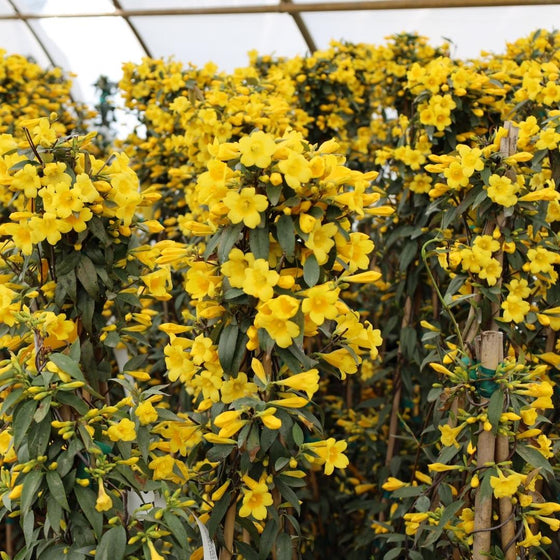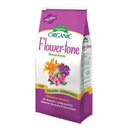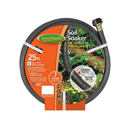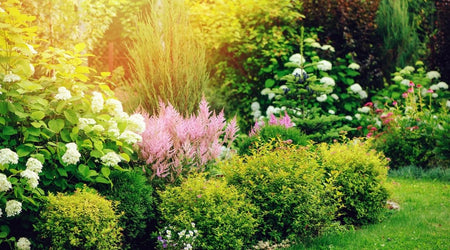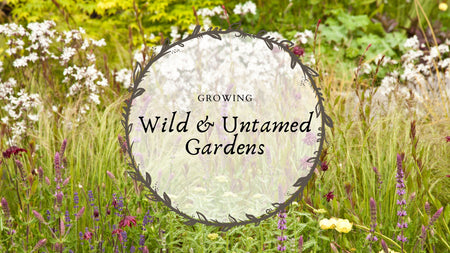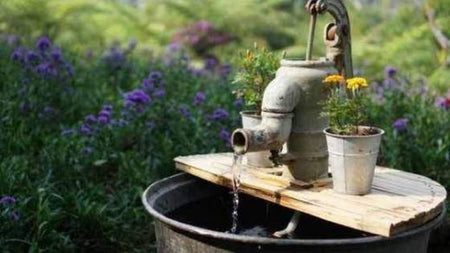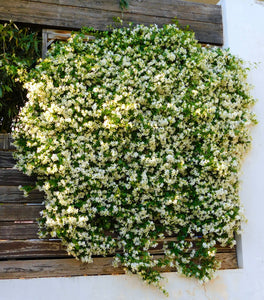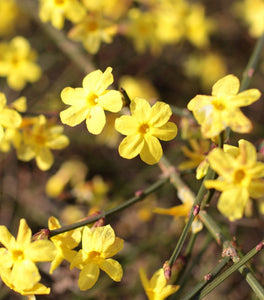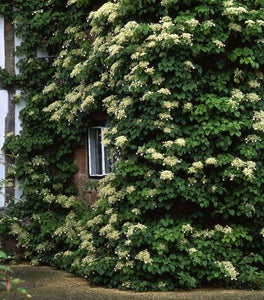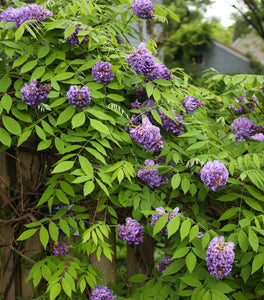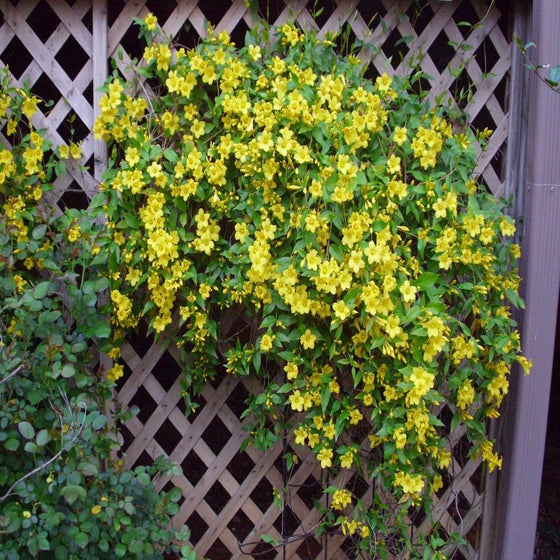
Images Depict Mature Plants
Carolina Jasmine Plants for Sale Online
Carolina Jessamine (Gelsemium sempervirens) features bright yellow trumpet-shaped blossoms and glossy green foliage that cover the slender trailing branches. Not to mention, this plant is semi-evergreen meaning it will bring interest all year round.
This native vine looks fantastic when planted on a trellis or fence as it can grow up to 20 feet in ideal conditions. On the ground, it makes an excellent flowering ground cover. While sempervirens carolina is tolerant of loamy and clay soils, it grows best when planted in rich, well-draining soil that is kept moist; try not to let the soil completely dry out.
Full sun is a must for Carolina Jessamine. It can tolerate light shade, but it will focus its energy on growing upward to find more light, resulting in leggy and flowerless branches below. For the optimal amount of spring blooms, make sure your plant gets as much light as possible.
Yellow Jessamine is a flowering evergreen plant native to the South Eastern areas of North America and as a result, is not a big fan of the cold and cannot tolerate extensive frost. We recommend only planting Jessamine if you live within zones 6 through 9. That is why it is all the more impressive that Carolina Jessamine bloom in late winter/early spring, sprouting their electric blossoms as early as January.
Overall, the Carolina Jessamine plant is very easy to care for. They are known to be deer resistant and should not have significant problems with insects or diseases.
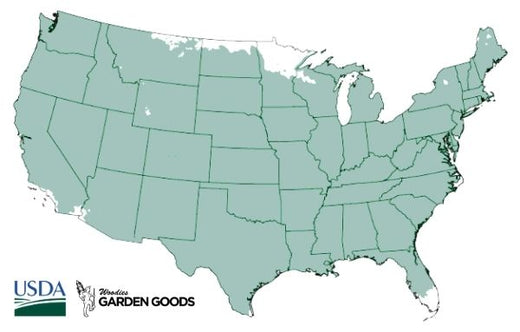
| Hardiness Zone: | 6-9 |
|---|---|
| Mature Height: | 10 to 12 feet; 20 with support |
| Mature Width: | 6 to 8 feet |
| Sunlight: | Full sun |
| Water Requirements: | Water well until established |
| Selling Points: | Attracts humming birds, butterflies, and birds |
| Details: | Excellent vine for trellises, arbors, and fences |
How to Care for Carolina Jessamine
Read our recommended care instructions to ensure a happy and healthy plant for years to come.
How often should I fertilize my Carolina Jessamine?
To boost the growth of this vining plant, it is best to fertilize it twice during the growing season using an all-purpose fertilizer. Do not fertilize it late into the summer or fall as this may stimulate growth that will not have enough time to establish and therefore perish the following winter.

When should I prune my Gelsemium sempervirens?
It is best to prune Carolina Jessamine in the spring after the flowers have diminished. This may be done to remove leggy areas of the plant or encourage reinvigoration. Cutting the tips of the vines promotes fuller growth (rather than wide-spread vining)


